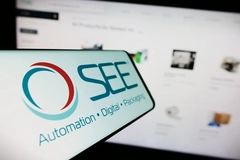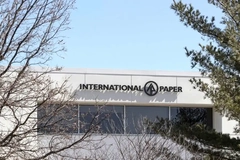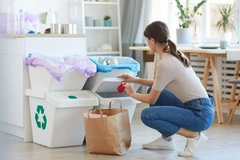Pharma packaging developers combat counterfeit medicine surge with safe and sustainable solutions
30 Nov 2022 --- Increased rates of counterfeit medicine are inspiring pharmaceutical packagers to advance anti-counterfeit solutions while remaining focused on satisfying environmental sustainability demands and changing legislation.
The global pharmaceutical packaging market size was valued at US$110.4 billion in 2021 and is projected to reach US$243.7 billion by 2030 at a CAGR of 9.2% from 2022 to 2030, according to Straits Research.
PackagingInsights speaks to industry experts about the key trends in anti-counterfeit and ecological products. They also call for less flux and flow in pharmaceutical packaging legislation based on frustrations from the many changes in laws this year.
“In an area as complex as pharma, where legislation is in a near-constant state of flux, any kind of stability and assurances for business would be welcome,” says Erwin Klünder, head of sales at healthcare at Graphic Packaging International (GPI).
“What is important is to have a wide range of solutions that are cost-efficient, simple to interpret and easy to implement globally – but difficult to replicate. This is certainly a challenge, but an extremely motivating one, as innovations could change people’s lives,” adds Anniina Loippo, product manager for pharma at UPM Raflatac.
Anniina Loippo at UPM Raflatac pinpoints the importance of clear legislation and environmental sustainability in pharma packaging design. Counterfeiting concerns
According to the World Health Organization, counterfeit medicine is deliberately and fraudulently mislabeled concerning identity or source. Moreover, counterfeit creation does not look to be slowing down. From 2014 to 2018, the total incidents increased by 102%, reports the Organisation for Economic Co-operation and Development (OECD).
“Counterfeiting is an increasing issue for our customers as counterfeiters are getting more creative. Fortunately, smart anti-counterfeit solutions exist and are continuously upgraded to stay one step ahead of the fraudsters,” emphasizes Klünder.
“At a time when the global illicit medicine trade is worth over €4 billion (US$4.1 billion) according to the European Observatory on Infringements of Intellectual Property Rights, this has never been more important for our customers.”
Meanwhile, misinformation regarding how many drugs circulating in the market are counterfeits is seen within the industry. According to the US Food and Drug Administration (FDA), the statistics on counterfeit medicines’ prevalence need to be more transparent and are often misreported. A UN report in 2004 wrote that 10% of drugs are counterfeits – however, the FDA refutes the estimate.
“Anti-counterfeit packaging is crucial to protect patients from harm and brands from irreparable damage. Anti-counterfeit solutions help protect the brand integrity of our customers while ensuring safer medication for the patients,” says Pierre-Henri Bruchon, executive vice president of pharma at Constantia Flexibles.
Counterfeit by country
The OECD reports that many countries lack adequate regulation and enforcement, especially in the developing world. Fakes can be made relatively cheaply and are at least as profitable as narcotics with a lower risk of penalty.  Between sustainability, safety and new legislation, pharma packagers have many considerations when developing products.
Between sustainability, safety and new legislation, pharma packagers have many considerations when developing products.
According to an OECD study in 2019, global trade in counterfeit pharmaceuticals was up to US$4.4 billion in 2016, representing 0.84% of worldwide imports in pharmaceutical products.
Even in industrialized countries, the risk of prosecution and penalties for counterfeiting are inadequate. Medicines reaching the consumer are also different from other popular goods. In pharmaceuticals, the end-user has little knowledge of the product and, therefore, little knowledge of counterfeit versus valid products.
Counterfeit medicine is most commonly produced in developing countries. However, 85% of the world’s pharmaceutical market is in the developed world, where counterfeits are less than 0.2% of the market.
“Counterfeit pharmaceuticals are a massive global concern and, unfortunately, even more prevalent in developing countries. Not only is a patient not getting the drug or treatment they should, which could even lead to death, but someone is profiting out of this hoax,” says UPM Raflatac’s Loippo.
“Every penny a criminal organization receives from this operation can be used to develop new systems and tools to bypass the current security features. That is why solutions and innovations in the field of anti-counterfeit packaging are crucial.”
India is the leading provenance economy of counterfeit pharmaceuticals, originating 53% of the total seized value of fake pharmaceutical products and medicines worldwide in 2016. US brands have been historically the most affected by the trade in counterfeit pharmaceutical goods, followed by the UK, France, Austria, Germany and Switzerland.
 Pierre-Henri Bruchon, executive vice president of pharma at Constantia Flexibles, highlights the necessity of anti-counterfeit pharma packaging for consumer safety. Legislation clarity
Pierre-Henri Bruchon, executive vice president of pharma at Constantia Flexibles, highlights the necessity of anti-counterfeit pharma packaging for consumer safety. Legislation clarity
GPI’s Klünder continues to tell us that the pharmaceutical packaging industry would improve significantly from clearer legislation. “It would benefit all industry stakeholders and patients if there were more harmonized legislation in different markets.”
“This could help all stakeholders in the industry work more closely together to solve urgent problems, such as the scourge of counterfeit medications. This is a key issue at the moment, as 2022 has been one of the most turbulent years for pharma legislation in recent memory.”
He continues by referencing increased customer demand to adjust the packaging to meet a wide variety of legislation. “Our customers regularly come to us needing more flexibility in their coding systems to keep up with rapidly-changing track-and-trace regulations around the world.”
Meanwhile, UPM Raflatac’s Loippo identifies trying to keep up to date with trends while abiding by governmental rules as a main challenge in the industry. “Packaging solutions not only have to fit the local end-of-life recycling landscape, but also the [environmental] sustainability targets of the pharmaceutical companies, and the safety and compliance requirements of governments.”
“The legislation and policies concerning sustainability in pharmaceutical packaging can be fragmented and have vast local differences, although admittedly, this is still very much a developing field,” she notes.
Environmental sustainable trend
All sectors within the packaging industry have had a surge in demand for more environmentally sustainable options, and pharmaceuticals are no exception. “We see an increase in the demand for more sustainable products,” confirms Constantia Flexibles’s Bruchon.  GPI creates pharmaceutical packaging to counteract the fake medicine plaguing the industry.
GPI creates pharmaceutical packaging to counteract the fake medicine plaguing the industry.
All the experts PackagingInsights speaks to spotlight the growing demand for eco-friendly packaging. “The health of our planet goes hand-in-hand with the health of the people living on it – a connection that isn’t lost on the big pharma companies,” says Klünder.
“Adopting fiber-based packaging made from responsibly-sourced materials and designing for recyclability [are key considerations]. However, these sustainability goals must be considered alongside patient safety, which is the number one priority for any pharma product and can never be compromised.”
Loippo echoes Klünder’s point on environmental sustainability not coming at the expense of safety. “Consumers want minimal, resource-optimized packaging, but it must also be protective and, at the same time, made from renewable or recycled content to allow for recycling, with clear instructions on the package,” she says.
“Legislation that specifically imposes rules or guidance on sustainability must take all other critical factors into account first. This does not mean that the sustainability regulations of pharmaceutical packaging are not – or should not – be developed further. It just means it is a long process. Increasing the sustainability of pharmaceutical packaging requires a joint effort from all parties involved.”
By Sabine Waldeck











